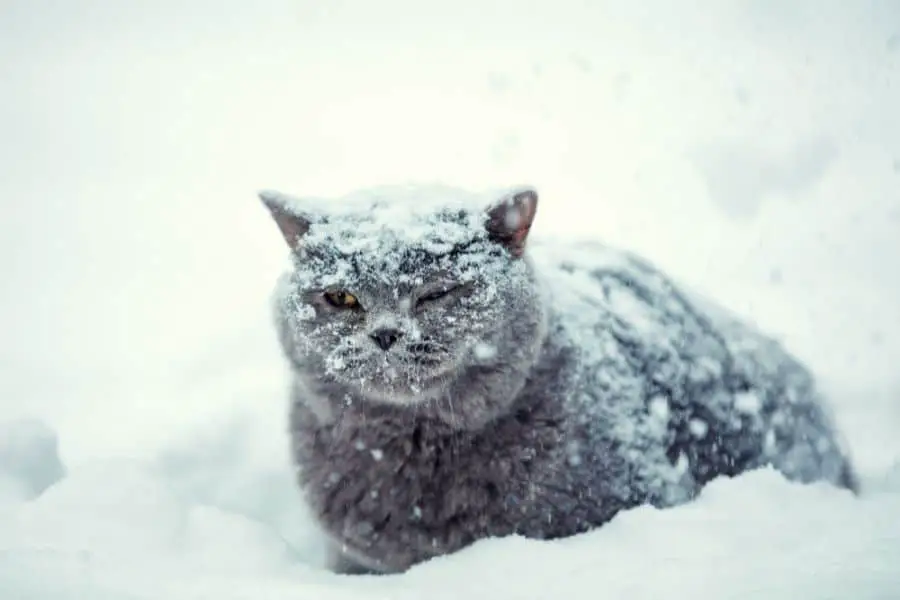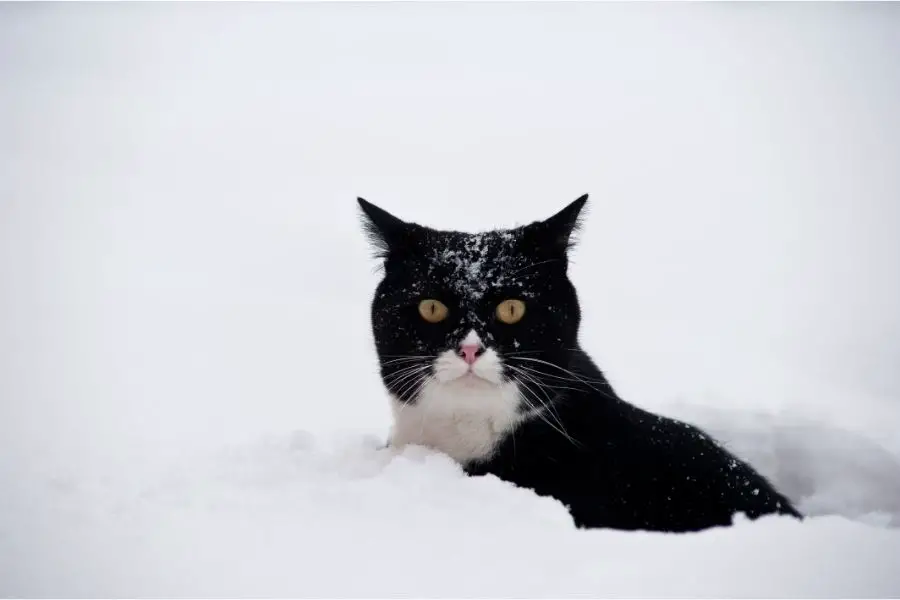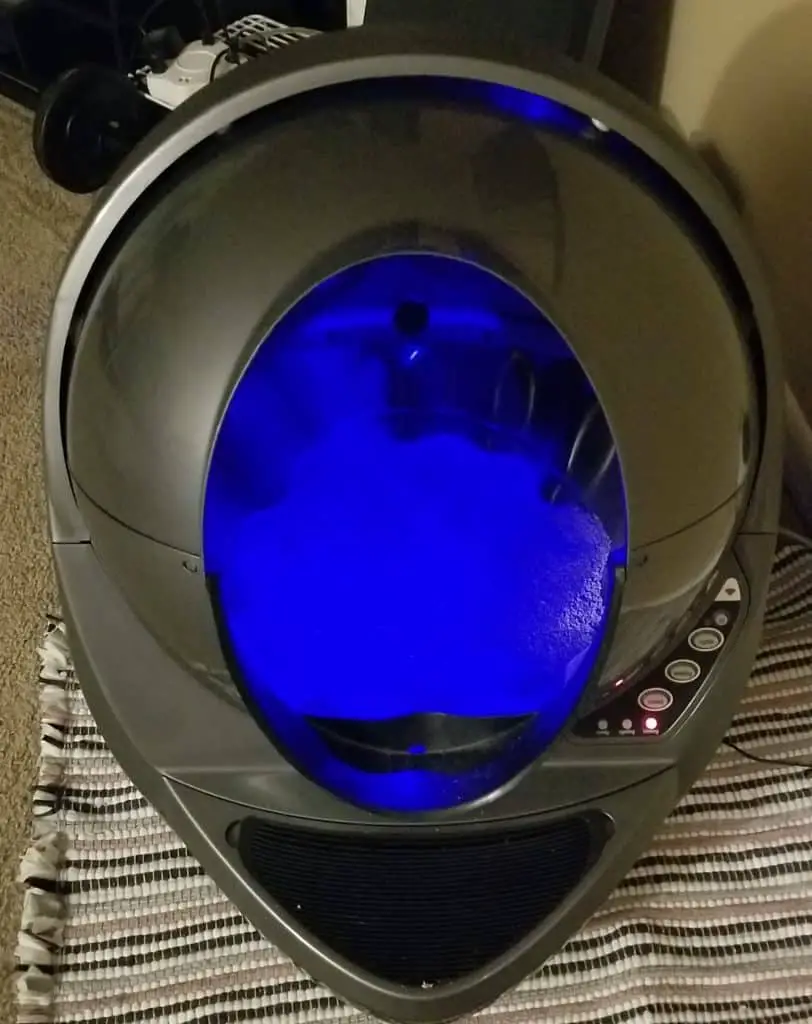More Meows is an Amazon Associate. As an Amazon Associate we earn from qualifying purchases. We may also earn commissions if you purchase products from other retailers after clicking on a link from our site.
With winter right around the corner, first-time cat owners are concerned about how well their feline friends adapt to the cold weather. And while cats are pretty adaptable creatures, do cats like cold weather?
Most cats do not like cold weather, but some cat breeds, such as the Siberian, Maine Coon, and Norwegian Forest Cat, may like cold weather due to their robust fur coats. Cats that are hairless or have short fur coats such as the Sphynx, Abyssinian, and Bengal will not like cold weather.
In this article, we’ll look at what temperature is too cold for a cat and figure out when your cat is feeling chilly. So, read on!
If you wonder what the best products are for your cat, check out this article that will break down all my recommendations for you: Things To Buy For A Cat Right Now!
Cats and Cold Weather
As any cat owner must have noticed, cats prefer to sit on cushions, mats, or laps, where their bellies can stay nice and warm. They tend to avoid sitting on wooden or marbled surfaces, for the most part.
Most cats do not enjoy cold weather. If a cat has a short fur coat, you should expect that the cat will not enjoy cold weather. If a cat has a full winter coat, such as a Norwegian Forest Cat, then that cat could like cold weather. If it is too cold outside, you should keep your cat indoors.
Of course, you’ll find some cats lying on the floor, enjoying the chill. But most cats prefer to snuggle up somewhere warm before taking a nap or looking off into space.

What Temperature Is Too Cold for Cats?
Cats have a body temperature between 100 and 102.5°F (37.8 and 39.2°C), which is slightly higher than the average body temperature of humans. As such, most cats prefer warmer settings where their body temperature and the outside temperature are similar, so they feel comfortable in their environment.
Temperatures below 45°F (7.2°C) are too cold for cats, and at these temperatures, cats are at risk of hypothermia. While cats can tolerate such cold temperatures for some time, they are likely to start freezing beyond this point.
Temperatures below 100°F (37.8°C) can be unnatural and uncomfortable for cats, but most should adapt if the difference is negligible.
If you have a cat that moves in and out of the house, it’s best to try and keep them indoors most of the time during winter. Most likely, your cat will start spending more time indoors during the winter as they dislike the cold.
Do Cats Prefer Heat or Cold?
Cats prefer heat to cold, which is true for most breeds. However, in some instances, cats may like cooler temperatures. For example, a cat’s tolerance towards cold weather depends on its breed and the thickness of its fur.
Hairless cats should never be left outside during winter as they are likely to get affected easily and suffer from hypothermia.
Here are some other factors that contribute to whether cats prefer heat or cold:
- Cats bred in frigid weather, like the Maine Coon and the Siberian, prefer cool climates as they were created to endure cold weather. The Maine Coon has thick fur protecting it from the cold and larger feet for better stability while walking on snow.
- Cats that are a bit plump may also be able to adjust to cold weather easily. The layer of excess fat on the cat’s body keeps them warm even in colder climates.
- Some outdoor cats tend to get used to colder temperatures and adverse weather conditions. As such, some may prefer slightly cooler temperatures than indoor cats. However, they still prefer to stay warm and can handle hotter settings far better than cold ones.
How Do I Know if My Cat Is Cold?
You will know your cat is cold if they are sitting in a hunched position or if their extremities are cold. Your cat may search for warm places to sit. You want to ensure your cat is warm and insulated so they don’t develop hypothermia. You should keep your cat indoors, especially if it is cold.
Four Signs to Tell if Your Cat is Cold

1. Compressed Posture
A cat’s posture is the first thing to pay attention to when trying to determine whether your cat is cold. Household cats are usually comfortable in their home environment and will spread themselves out in a relaxed position when they aren’t active.
But if you notice your cat sitting in a hunched-up position with its paws and tail tucked beneath them, your cat is likely feeling cold. They will go into this position to preserve heat and keep themselves warm.
Sometimes cats like to sit this way, but if you find your cat sitting like this often, it’s likely they are feeling cold.
2. Coldness on Their Extremities
If you find your cat shivering, it’s an obvious sign that the temperature is too chilly for them. However, you can also check certain parts of your cat’s body to determine whether they are cold.
If the extremities, such as the ears, soft padding on their paws, and tip of their tail, get cold, it’s a sure sign that your cat is uncomfortably chilly.
3. Seeking Warmth
Checking where your cat takes a nap is an effective way to gauge when your cat is feeling cold. Cats tend to have specific locations around the house that they love to occupy and can often be found in one of their many favorite spots.
However, if you see your cat routinely making its way to the fireplace or near the radiator, it’s a sign that they’re trying to increase their body temperature. In such cases, it’s best to find a few warm spots in your house and lay some padding to keep them comfortable.
4. Lack of Mental Alertness
Cats are intelligent, sharp creatures with acute senses that pick up any movement, sound, or stimulus in their environment. Their mental alertness and love for games make them fun playmates to have around.
So if you find that your cat seems uninterested, sluggish, or indifferent towards your advances to play with them, they may be feeling cold.
Do Indoor Cats Get Cold Easily?
While outdoor cats tend to have some experience with cooler temperatures, indoor cats can get cold quickly. If you live in a house with air conditioning, it’s essential to set your home’s temperature at a temperature that will be comfortable for your cat.
Five Ways to Keep a Cat Warm
- Add more blankets to their bed. Cats love to snuggle up under a blanket, so leave a few on their bed and let them arrange it however they want to.
- Get the bed off the floor. The floor usually gets cold in winter, and this cold seeps through the bottom of the bed and causes your cat to feel chilly. Sometimes, simply elevating the bed and placing it on a chair can help keep them warm while they sleep.
- Allow sunshine in. As a cat parent, you’re sure to find your cat basking in front of the window when the sun is out. During winter, it’s especially crucial to keep your curtains drawn and allow sunshine in so your cat can heat itself.
- Increase their playtime. Cats love to play, and you can take advantage of this natural tendency to get them to stay active and warm up their body temperature. Set aside a chunk of time every day to play with your cat and get their temperature up.
- Feed them more. While most cat parents have a strict feeding policy, it’s safe to relax the restrictions a little in winter. Cats tend to burn more calories to stay warm in winter, and feeding them extra food is an effective method of keeping them warm.
Conclusion
Cats can usually tolerate some changes in the ambient temperature of their home, but if it gets below 45°F (7.2°C), you’ll want to provide some blankets for your cat to lay on. You might also think about getting a few personal heaters to place in areas where your cat likes to sleep to warm up the area.
One rule of thumb for deciding if your home is too cold for your cat is to see if it’s too cold for you. If you and your cat are shivering, it might be time to turn up the heat.
If you enjoyed this article, please check out a few more:
- Should Cats Wear Clothes? (Honest Information): Click Here.
- Can Norwegian Forest Cats Go Outside? (Practical Reasons): Click Here.
- Can Stray Cats Survive A Hurricane? The Revealing Ways: Click Here.
Here are some of my favorite cat products
In addition to checking out some other More Meows articles, I hope you’ll check out some of my favorite cat products as well. These are affiliate links, so if you end up using them, I’ll get a commission at no extra cost to you. These are the products I really do find most helpful.
Litter Box: I started out with normal, traditional litter boxes for my cat. Then, I tried this automatic litter box on Amazon (affiliate link), which helped reduce the litter upkeep. Finally, I am now a believer in the Litter-Robot 3 Connect on Amazon (affiliate link). This robotic litter box is not for everyone based on the price tag, but for me the benefits (very little upkeep, works efficiently, clean, mobile app) far outweighed the cost.

Cat Tree: I have purchased a couple of this Amazon Basics Cat Tree on Amazon (affiliate link). My cat spends a lot of time on and around this cat tree, which I position near my sofa. She uses the scratching posts on this cat tree multiple times a day, which means she is not scratching the sofa instead.
Cat Water Fountain: I love this cat water fountain on Amazon (affiliate link). There are three main benefits to having a water fountain like this for your cat. The first benefit is that it keeps water running so that your cat doesn’t need to drink still water. The second benefit is that it filters the water. The third benefit is that it will keep your cat hydrated!
